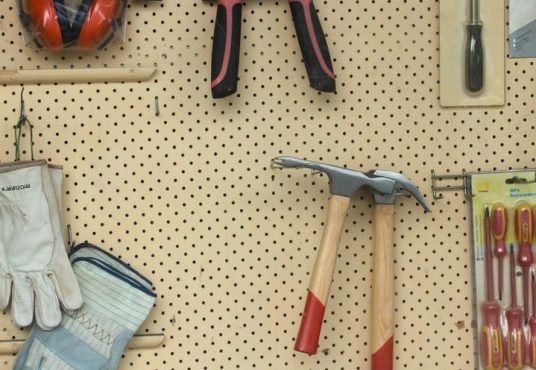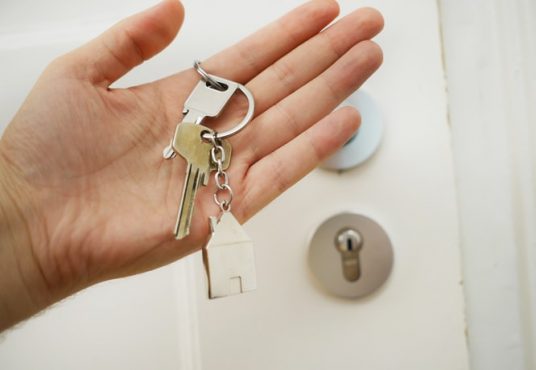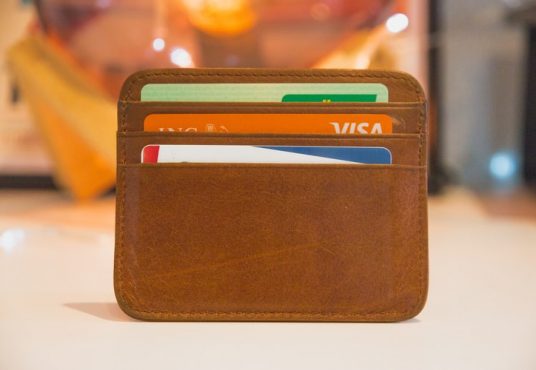
There are many reasons to safe-proof your home, from protecting babies and toddlers to even your new pets.
Even if you feel confident that your environment is pretty safe, chances are you’ve missed something. And our hope is that by the end of this article you would be able to find ALL of the potential dangers around your home and be able to address them properly.
First, let’s go room-by-room to identify the threats…

When it comes to safe-proofing, your child’s room is a good place to start!
Start by installing a plush carpet to prevent injury from those unavoidable falls. Avoid cribs with decorative cutouts or corner posts. Make sure the crib has a firm mattress and keep out pillows, fluffy comforters, and even soft stuffed animals to avoid suffocation. If the crib has bumper pads, make sure to remove them when the child gets old enough to stand since they can be used as a step to get out of the crib.
Changing tables should have three raised sides and a restraining strap to protect against falls. Make sure playpens and cribs have narrow slats that don’t have enough space for your child’s head to get wedged between them.

Bathrooms have many hidden hazards. Remember to supervise young children in the bathroom at all times.
Make sure to unplug all electric appliances, such as hair dryers when not in use and store them out of reach.
To prevent slips and falls, place non-skid mats or rugs in the bathtub and on the floor.
Look for child-proof locks for the toilet and cabinets. Make sure to store medications out of reach and in containers with child-resistant caps.
Another hazard if you’ve got water heating systems to consider – bath time! Test water temperature with a water thermometer at bath time or set your water heater to 120 degrees to avoid scalding burns when little ones are extra helpful by turning on the faucets by themselves.
Just like in the bathroom, you’ll want to install child-proof locks for lower cabinets and drawers.

Make sure nothing sharp is reachable and keep small appliances far back on the counter and unplugged when not in use with cords secured.
Place forks and knives in the dish racks or dishwasher with the handles up and points down.
Keep chairs and step stools away from the counters and stove to avoid the temptation to climb. When cooking use the back burners and keep pot handles turned inward. Also, use knob covers or stove shields to keep little hands from accidentally turning on the oven.
Make sure to place refrigerator magnets out of reach, especially ones that are small enough to fit in a child’s mouth and cause choking.
Avoid using tablecloths which may be tempting for a child to pull on and bring plates or hot food onto themselves.

There can be many hidden dangers lurking in living rooms and gathering areas.
Place pads on table corner edges, and be particularly wary of glass tables. Table edges are treacherous for a little one learning to walk. Make sure glass tables are made of tempered glass, whereas non-tempered glass shatters easily.
Make sure any freestanding furniture is securely fastened to the wall. High bookcases and TV stands sometimes come with hardware for security because they can tip over easily.
When it comes to protecting against other hazards remember to keep doors closed, block off stairs, and keep clutter off the floor.
The best way to identify potential hazards is to get down on the floor at eye level to experience what your little ones will see.

- Make sure to tuck cords away. Pets who chew on a plugged-in cord can be electrocuted.
- Toddlers may use cords to try to climb on the furniture causing heavy equipment to fall on them.
- Make sure to secure any loose wires or cords by either keeping them out of reach, securing to the wall, or covering them.
- Loose blinds or curtain strings can also provide a tempting new thing to explore but can be serious choking risks.
- Make sure windows can’t open more than 3 inches. Hardware can be installed to limit how far windows open and gates can block access to windows.
- Be aware of furniture that can be climbed near open windows. Don’t count on screens to be enough to keep a curious child or pet from falling through.
- Shorten drapery and blind cords also cut any that are looped. Better yet, look for cordless blinds to install throughout the home.
- Mark sliding doors and other expanses of glass with colorful stickers to avoid anyone running into them.
- Poison proof your home by keeping chemicals out of reach. This includes cleaning agents, medicines, hand sanitizer, vitamins, toiletries, mothballs, dishwasher pods, laundry pods, etc.
- Keep purses and bags out of reach as well which may contain many similar dangerous products.
- Make sure household plants aren’t toxic. If they are, keep them out of reach.
We’ve personally found it handy to post up a tip sheet on the refrigerator on the various remedies needed for poisons, burns, allergies and general little mishaps …just in case.

Never leave babies or young pets unattended even for a moment in or near a pool or other water source. Even shallow wading pools and bathtubs can be a potential threat to a child left unattended.
Store empty wading pool upright after use. Also, remember not to leave even small amounts of water, cleaning solutions, or other liquids in buckets or other containers.
Also, install 4-foot high safety fencing around pools with a self-closing, self-latching gate to keep little ones out.
You can easily find and install all kinds of safety devices throughout your home. Safety devices should be sturdy enough to hinder access and yet easy for you to use. They can usually be found at hardware stores, baby equipment shops, supermarkets, drug stores, home improvement stores, and on the Internet from sites such as Amazon.
A few others include:
- Safety gates can help prevent falls downstairs and to keep children from entering rooms and other areas with possible dangers.
Additionally, doorknob covers can be used to keep children away from places with hazards.
- Anti-scald devices can be installed to faucets and shower heads to help prevent burns from hot water.
- Outlet covers and plates help prevent and protect children from electrical shock and possible electrocution.
Far too many children face unintentional firearm deaths. To keep your child safe, make sure to get a trigger lock for your firearm and keep it in a locked cabinet. Make sure to lock up the ammunition in a separate place and load and unload your weapon away from home.
Keep in mind children can be curious about guns, no matter how used to seeing them they may be — and they are very good at finding them and imitating your actions. Did you know a 3-year-old is strong enough to pull a handgun trigger?

When it comes to pet safety, there are a few additional precautions to consider.
Indoor plants can be a problem for pets, as well as plants in the garden.
Common plants that can cause problems include:
- Aloe Vera
- Sago Palm
- Croton
- Aspargus Ferns
- English ivy
- Foxglove
- Hydrangeas
- Daylilies
- Oleanders
Compost, cocoa-based mulches, pesticides, insecticides, fertilizers, and other garden chemicals can all cause problems for pets. Your first line of defense is keeping things stored away safely and out of reach.
Also, be aware of other plants or fungi that may sprout up unexpectedly. Because of this, make sure not to leave pets in the yard unattended.
Garages can easily be overlooked when it comes to safe-proofing. This area is often storage sites for things that can be a problem if your pets get into them. Some examples of these include pesticides, gasoline, solvents, antifreeze, coolants, and oils.

Avoid problems by keeping toxic items high up or in a closed cabinet. The same goes for small things like loose screws, nuts, bolts, and nails.
To dog-proof your living room:
- Make sure to securely shut your front door properly each time you enter or exit.
- Install a doggie gate to create a barrier between the areas of your house your dog should and should not be in.
- Put away all candles, potpourri, and other low-lying decors that your dog could potentially ingest.
- Bundle electrical cords and pick them up off the floor so that your pet can not reach them.
- Make sure to collect and put away children’s toys and other clutter. Items found lying around can be very tempting for young pups, but not safe for them to chew on.

If you are concerned about your pet entering a room containing something harmful, the best thing to do is keep them out with the door closed. If this is not an option, you can:
- store decorations out of sight
- avoid keeping any snacks in your bedroom
- keep low windows securely closed
- empty trash cans regularly or remove them from the room entirely
- keep your wardrobe and shoes safely locked away in your closet
- keep electrical cords out of reach
Bathrooms can contain many curious items for your pet to explore. Like the bedroom, the best way to dog-proof your bathroom is to keep the door closed. Tips for safe-proofing when the door must remain open:
- Keep the toilet lid down to discourage pets from drinking directly from the bowl.
- Take all cosmetics, creams, toothpaste, and medications and put them in a cabinet that is high enough that your pet cannot reach.
- Make sure shampoos and soaps that are in the shower are put on a tall rack.
- Store all electrical appliances in the cabinets and keep cords off the ground.
- If your window is low enough for your dog to reach when standing on his hind legs, make sure to keep it closed.
Pets learn quickly that the kitchen is where all the goodies are kept. Pet-proof your kitchen by removing all cleaning products and food items kept in lower cabinets.
It’s a good idea to keep a list of people foods that are toxic to pets on your refrigerator until you memorize them. It can be tough to resist those cute faces, but safety must come first when feeding your pets any people food. Common offenders are sugary and salty snacks.
Don’t forget to keep trash tightly sealed too!

We hope you enjoyed taking the time to learn about safe proofing your homes – whether for the four legged or two legged little ones.




